At Home With Health
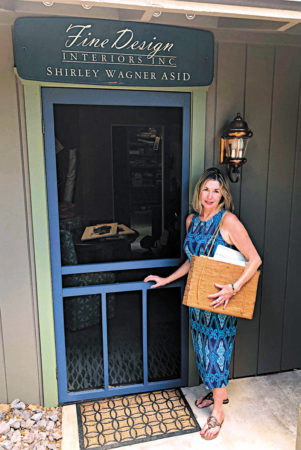
Interior designer Shirley Wagner at her office in Waimea. KRISTINA ANDERSON PHOTO
Freeing homes of toxic furnishings and replacing them with healthy alternatives remain the aim of interior designer Shirley Wagner.
We all know about eating and exercising to stay healthy, but how many of us think about the potential toxicity of the furnishings in our home environments? Turns out, nearly all the furnishings in our abodes, from couches, chairs, tables and mattresses to flooring and carpets, are not only toxic, but are also highly flammable due to their petroleum-based properties.
Award-winning interior designer Shirley Wagner, principal of Waimea-based Fine Design Interiors Inc., wants to change that. She is passionate about creating healthy environments that nurture both body and soul, which is why she has introduced a line of sustainable and healthy furnishings, “Design Alive.”
“My philosophy is to design with honesty and to have a love and passion for creating a healthy atmosphere for my clients,” says Wagner, who moved to the island in 1987 from Kansas City, Missouri, where she was a partner in a small design firm.
Wagner first started learning about toxicity in furnishings and finishes from the very vendors she works with.
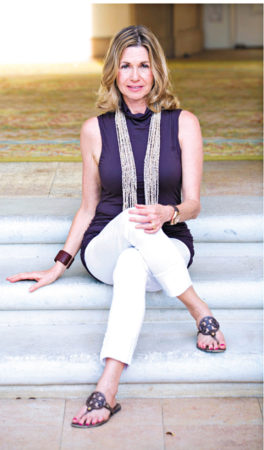
Shirley Wagner aims to bring sustainability and health-conscious materials into island homes.
PHOTO COURTESY SHIRLEY WAGNER/FINE DESIGN INTERIORS INC.
“I got a real shock when an upholsterer I have worked with for years told me he was worried that the price of his goods and materials would skyrocket because of a recent global oil crisis,” she recounts. “I could not believe what I was hearing. The foam these cushions are made with is actually petroleum-based. That’s when I realized how inextricably these materials are linked with the petroleum industry.”
She also noticed a trend toward creating healthy furniture was happening naturally with local craftspeople. Some of the woodworkers who create custom furniture for Wagner began getting ill or allergic from the accumulated effects of so many years of working with toxic glues and finishes.
Many, such as furniture craftsman Ryan Donnelly at Modern Habitats Hawai‘i, have switched over to using beeswax and other gentle-on-the-earth products instead of toxic compounds.
“The first question you should ask yourself when buying new furniture is ‘What is it made of?'” counsels Wagner. “To know where your furniture is coming from and what it’s manufactured from are vital for your personal environment — and it will help you play a part in sustaining a healthier future for the planet.”
The only Hawai‘i interior designer who is a member of the global Sustainable Furnishings Council, Wagner offers clients the option of purchasing healthy and sustainable furniture as a package collection, or available as separate pieces. She says that surprisingly it’s not any more expensive than other high-end furniture and textiles she recommends to clients.
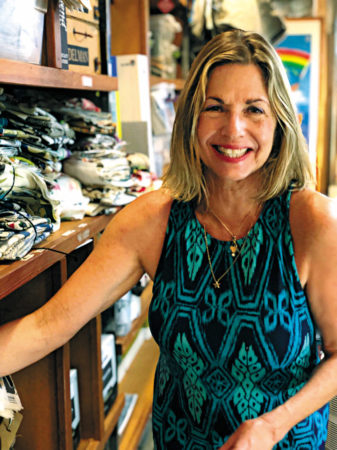
Shirley Wagner specializes in residential interior design. KRISTINA ANDERSON PHOTO
For those who can’t afford to hire designers, there’s still a lot to do without having to go “all in.” Wagner suggests starting small and perhaps doing a blend. Instead of buying new furniture, for example, customers can reupholster with healthy coverings, which also saves on carbon-based furniture shipping costs.
They can choose to use locally sourced latex in cushions to replace the noxious petroleum-based foam (“Natural latex smells heavenly,” assures Wagner).
They can buy furniture made from locally available or reclaimed woods that are finished with natural products, and they can also purchase inexpensive organic toppers and sheets for their beds if they cannot afford to replace the entire mattress.
Wagner says that even the large discount retailers are now carrying high-quality, all-organic linens at about the same price point as regular products.
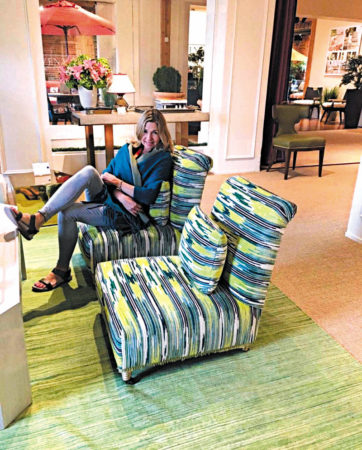
Wagner at the High Point Furniture Market trade show in North Carolina.
Wagner, who specializes in residential interior design, got her start on the island as a designer when she first arrived and managed Gallery of Great Things in Waimea. Making connections with artists islandwide, she also met numerous new clients.
As a professional ASID (American Society of Interior Designers) and an NCIDQ (National Council for Interior Design Qualification) designer, she has earned the top credentials in the field.
“Always look for professional credentials when hiring a designer,” she says. “This means they have passed rigorous testing on such things as building codes while adhering to the highest standards set by the industry.
“This means, for example, that designers with this certification must carry a certain level of liability insurance and abide by industry standards regarding contracts, client trust accounts and other important concerns.”
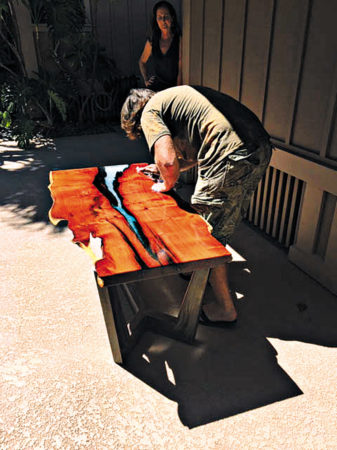
Ryan Donnelly of Modern Habitats Hawai‘i crafts a table using locally sourced kiawe for one of Wagner’s clients. PHOTOS COURTESY SHIRLEY WAGNER/FINE DESIGN INTERIORS INC.
Wagner’s projects over the years have ranged from the smallest historic beach cottage to the largest multi-million-dollar resort home. One project took her as far away as Antigua, where she was hired for the design and remodel of a classic Caribbean beach home. Her hands-on approach, deep knowledge and commitment to authenticity have won her satisfied clients and industry accolades for more than 32 years.
For those wanting to improve the interior design of their homes on their own, Wagner suggests they first take a look at the colors they choose to have in their surroundings.
“Pay close attention to the conscious colors you create in your life and the way your home is arranged,” she offers. “How do you interact with family and friends? You can create power and beauty in your space, because we are pulled toward beauty. Your home is where your heart is, so it is important to create joy and beauty in your aesthetics.”
Wagner thinks a lot about the products we use and surround ourselves with and that’s why creating healthy and sustainable interior design has become a mission for her.
“I wish to act in service to the world by not using harmful, oil-based products or unsustainable, non-locally sourced hard-woods with toxic finishes,” she says. “It’s the first step in the process of making the future more healthy and sustainable for ourselves and our planet.”
For more information, visit finedesignhawaii.com
WHAT IS YOUR FURNITURE MADE OF?
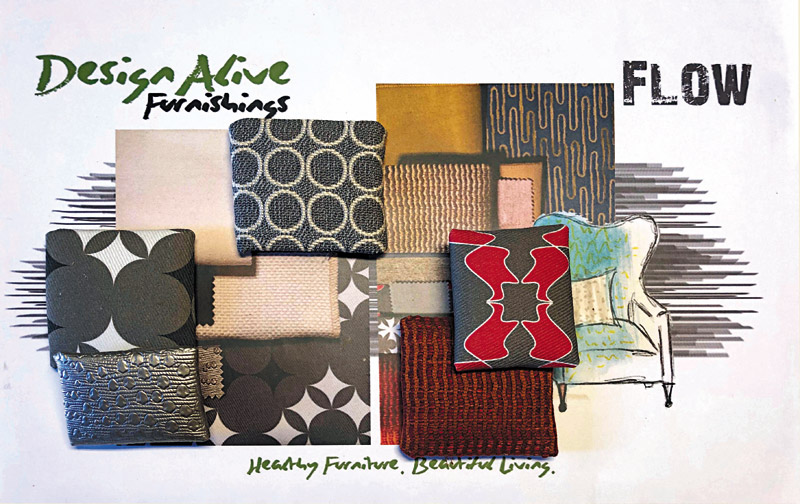
Fabric boards from the Fine Design Interiors Inc. “Design Alive” collection show clients the interior possibilities.
KRISTINA ANDERSON PHOTOS
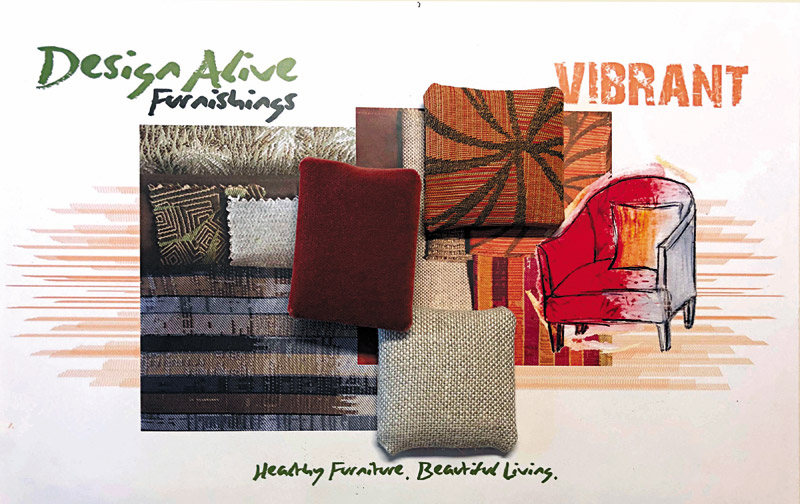
Here’s what to look for in healthy furnishings, according to Sustainble Furnishings Council.
WOOD
• Solid North American hardwood
• Reclaimed/recycled
• Plantation-growth wood, such as mango
• Fast-growing renewables, such as bamboo
LEATHER:
• Vegetable tanned
• Non-toxic dyes
• U.S. or E.U. production
• Genuine leather, not PVC
FOAM:
• Natural latex from rubberwood trees
• Bio hybrids that mix soy and petrol
• Down, kapok or other natural wraps
• Spun wraps from recycled bottles
FINISHES
• Water-based lacquers
• Natural finishes from waxes or oils
• Certified lowor no off-gas toxins (VOCs)
FABRIC:
• Certified organics, especially for cottons
• Natural fabrics such as wool, linen and hemp that require less water
• Recycled content
• No FR chemicals,
˛ ourinated stain treatments, antimicrobials

